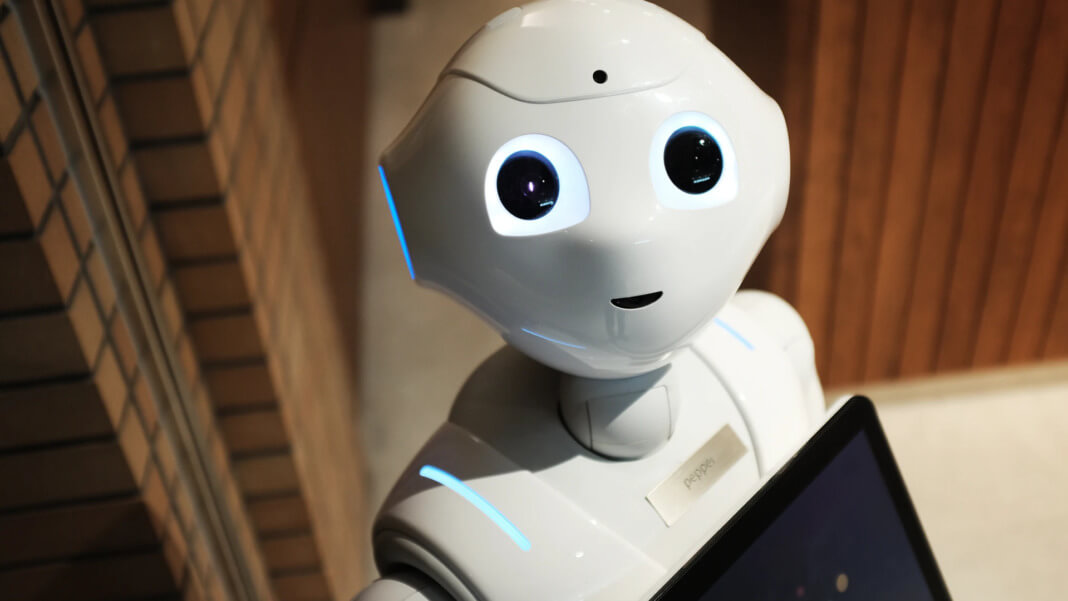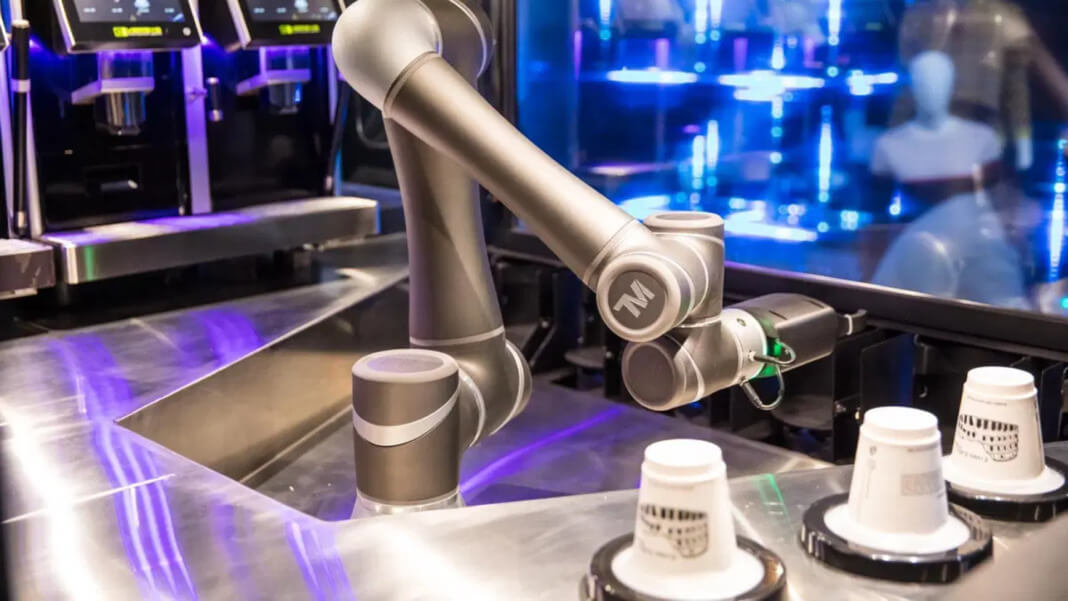Administrators and office staff spend a significant portion of their work time on tasks that don’t develop their skills or serve their interests. Employees are generally busy with an endless list of repetitive tasks that are necessary but boring.
To free up time for developing critical thinking and automating repetitive tasks, people began to think about how various automation types help simplify the workflow. They noticed that robots and AI could assist them and optimize their work processes.
In this article, we’ll look at how AI is transforming the workforce as we know it and is already helping employees be more productive.
A brief history behind Artificial Intelligence
Humans have been developing robots for a long time, beginning from the Egyptians in 300 BC to Leonardo da Vinci, who designed a blueprint for a humanoid robot in 1495. Despite all this, the term “artificial intelligence” appeared only in 1956.
And AI technology has reached real popularity only today with the increase in data volumes, improvement of algorithms, enhancement of computing power, including Magento MySQL optimization, and data storage facilities. The idea behind AI was for the system to learn from every experience it encounters and improve.
Let’s take a look at specific cases and tools of workplace transformation with the help of AI.
1. Boosts the hiring process
With the increased demand for online recruiting, AI programs can become an indispensable resource to find ideal candidates. They can analyze profiles and resumes and send personalized messages on a large scale.
According to recent LinkedIn statistics, 81% of surveyed recruiters believe that the trend of online recruitment, which gained incredible popularity during the pandemic, will not stop in the post-COVID era.
Therefore, the priority is to train AI to be gender-neutral, racial-neutral and ignore identifying information that can lead to biased decisions.
Also, during virtual interviews, artificial intelligence programs can analyze candidates’ facial expressions, tone of voice, and demeanor. This technology is widely used by large companies such as Google, Facebook, and Apple to recruit only those candidates that fit their culture.
Some AI-powered tools for recruiters
There are various ways that tools can help recruiters and hiring managers. For example, Textio’s AI tool analyzes company vacancies and similar posts from other companies. It then gives incentives to modify job descriptions to attract more applicants.
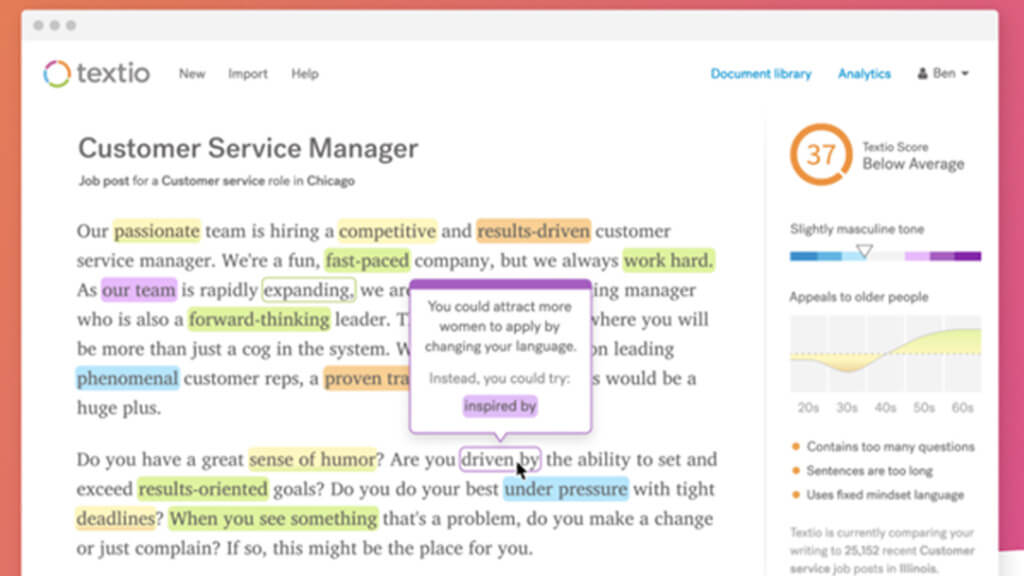
Another tool, Modern Hire, is used to schedule interviews so that recruiters can focus on more critical tasks. This way, candidates can choose a convenient time for them or reschedule interviews without the need to make additional calls or send text messages.
The two following tools, Stella and Koru, use credential tracking tools to find the perfect match. They focus on the experience and qualities the company is looking for from the employee.
Besides, managers can also use Palatine Analytics tools to assess employee performance and potential promotion candidates.
2. AI in sales and customer support
Conversational AI and chatbots utilize NLP (Natural language processing) and ML (Machine learning) to process large amounts of data. They learn from real marketers, salespeople, and customer service specialists. With this in mind, chatbots evolve and can compare to a knowledgeable person.
Most often, chatbots can be found on the site’s main page. A tea and teaware selling company, Adagio, uses its artificial assistant so that customers receive answers to the most frequently asked questions immediately and don’t wait for a specialist’s response.
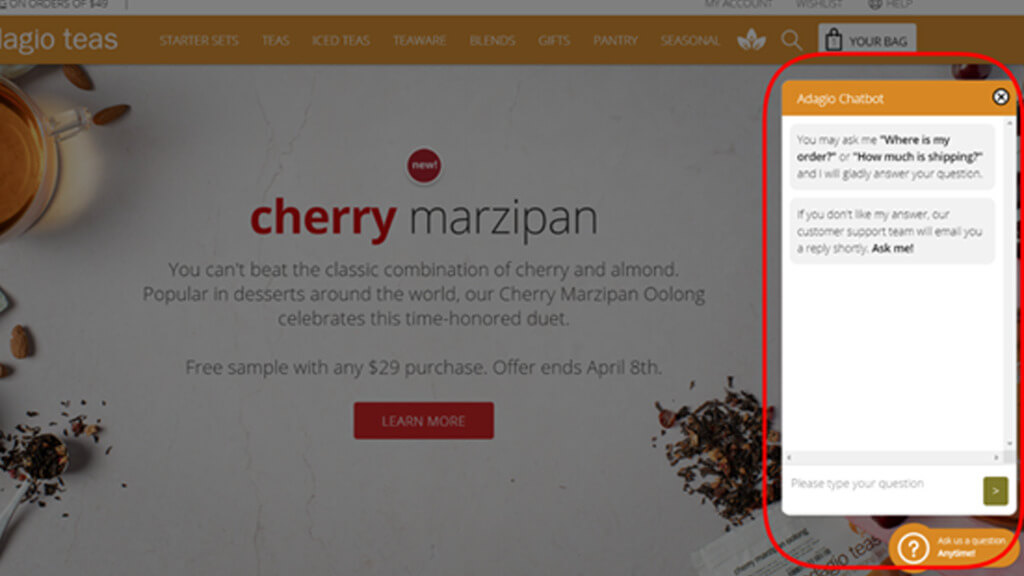
The chatbot can answer questions about finding an order and shipping costs, as it contains scripts and sample replies. If the chatbot doesn’t know the answer, it either directs the client’s inquiry to a human specialist or sends a request for the agent to intervene and show how to react in similar situations in the future.
As you can guess, this saves employees, especially customer support specialists, a lot of their time. With the chatbot handling a big batch of inquiries, they don’t have to process dozens of repetitive cases manually.
3. Serves for marketing insights
Artificial intelligence in marketing dramatically reduces time by collecting and analyzing customer data or economic trends to employ for marketing strategies. Audience data and profiles serve as a database for AI tools to tweak conversations with clients and send them personalized messages without needing a marketing team to intervene.
One example of how AI is being used in marketing is Unilever. Their AI systems process information and find influencers. The company has 26 artificial intelligence data centers worldwide that analyze publicly available social media information about human behavior.
For example, it turned out that there is a connection between ice cream and breakfast, as in at least 50 songs, the system found the phrase “ice cream for breakfast.” And in some cafes like Dunkin’, people prefer to buy ice cream in the morning. Using this observation, the company created a line of cereal-flavored ice creams under the Ben & Jerry’s brand.
4. Onboarding and training
During the onboarding period of new hires, AI can be used for:
- background checks;
- putting together different documents;
- or organizing paperwork.
AI can then automate the HR team’s manual work related to training documents that outline company policies and login information. The programs have built-in mechanisms that show when documents have been read, request an electronic signature, and schedule meetings to study the information further.
The main advantage is that the work of the HR department can be carried out around the clock from any device, which will allow employees to focus on more complex tasks that require critical thinking. AI tools monitor the execution of tasks and show employees how to complete the task with the best effect and result.
Cogito is a prime example of a teaching tool. It combines artificial intelligence and behavioral science and helps the customer support staff by pointing out their weaknesses to improve phone support.
For example, when a customer service agent responds too abruptly or slowly, the color indicator changes its color to yellow or orange and then back to green when the response is satisfactory. The screenshot below illustrates how Cogito prompts a specialist on how to augment its service.
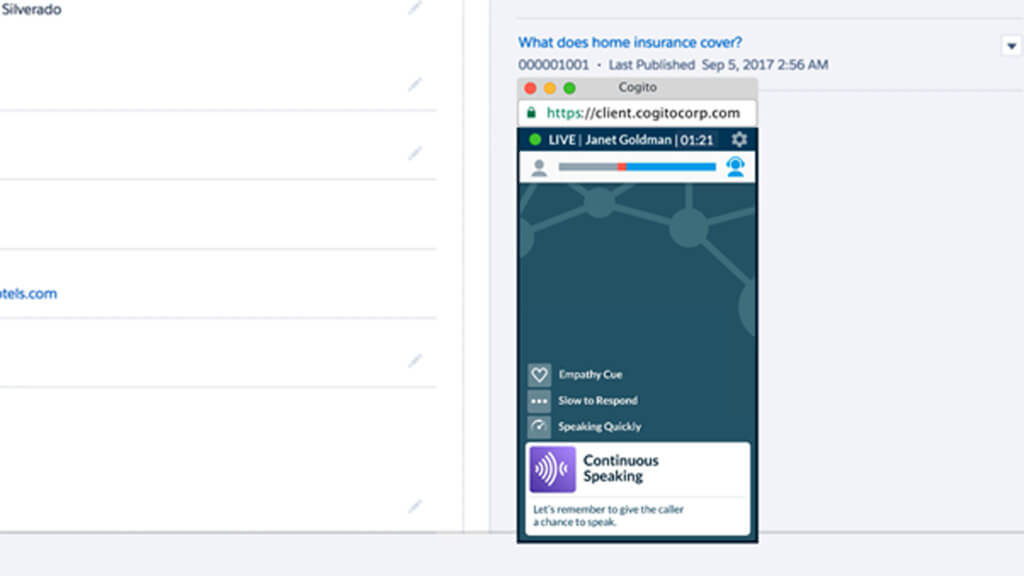
5. Predicts burnout
Various intelligent systems help determine burnout and predict the risk of dismissal, even if this employee is at an early stage and doesn’t know about the future decision yet.
For example, according to its metric, the AI platform Yva.ai, with an accuracy of at least 74%, reveals the first signs of frustration and burnout. It detects behavioral changes 11 months before the possible dismissal of an employee and determines the reasons for dissatisfaction.
The neural network classifies three stages of employee burnout:
- “Red” (severe burnout that leads to the active job search);
- “Yellow” (frustration meaning a decrease in professional activity, or early burnout that implies readiness for offers to change jobs);
- “Green” (low risk of burnout).
The system works using Deep Learning and Natural Language Processing (NLP) technologies. It is based on active and passive analytics.
Active analytics involves 60-second weekly polls, built individually for each employee. Passive analytics includes the examination of digital interactions of employees in the corporate data sources. These include Microsoft Exchange Server, Microsoft Office 365, G Suite, Slack, GitHub, Jira, etc.
The main principles of Yva.ai are the confidentiality of surveys and the privacy of the analysis of digital sources, while the anonymous data remains in the client organization.
To sum up
We encounter AI more often than ever before, sometimes without even knowing it. From creating a shopping list to turning on the thermostat, virtual assistants like Siri and Alexa make life easier for homeowners and the workplace.
However, the development of AI is surrounded by many fears, from the possibility of making a fatal mistake due to lack of critical thinking to reduce jobs. The indisputable fact is that AI increases the productivity of the enterprise.
A person can’t effectively do more than 10 hours of repetitive work. Sometimes this number decreases if a person is feeling tired. The artificial intelligence-based system doesn’t need rest, and it can work day and night with short interruptions. That is why so many businesses realize its potential and implement it to certain degrees.
